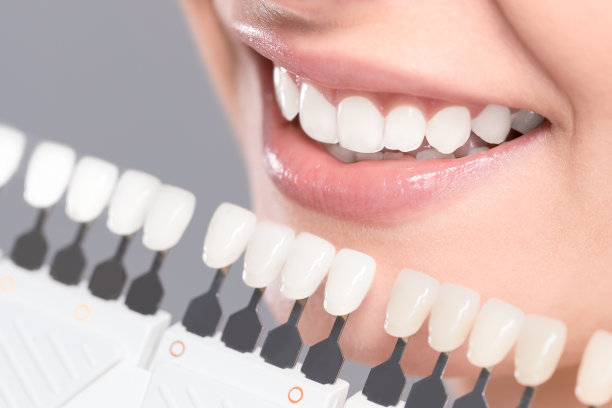The Essential Guide to Extracting a Tooth Understanding Procedures Aftercare and What to Expect
Summary: Extracting a tooth, whether due to decay, overcrowding, or other dental issues, is a procedure that many may face at some point. This guide serves as an essential resource, providing insight into the extraction process, what to expect during and after the procedure, and the necessary aftercare steps for optimal recovery. Understanding the intricacies of tooth extraction can help alleviate anxiety and ensure a smoother experience, enabling patients to navigate their dental health with confidence. This comprehensive overview aims to empower individuals with knowledge about the symptoms that may necessitate extraction, the procedural steps involved, effective aftercare practices, and realistic expectations regarding recovery.
1. Symptoms Indicating Tooth Extraction is Necessary

Tooth extraction can become necessary for various reasons. One of the most common indicators is severe tooth decay. If a tooth is too damaged for a filling or crown, extraction is often the best option to prevent further complications. Regular dental check-ups can help identify early signs of decay, thus paving the way for more conservative treatments.
Another reason for extraction is overcrowding. Many patients, especially those planning for orthodontic treatment, find their mouths are too small to accommodate all of their teeth. In such cases, a dentist may recommend removal to create more space, which can contribute to a more effective orthodontic result.
Lastly, periodontal disease can lead to tooth instability. Advanced gum disease can severely affect the supporting structures of teeth, leading to mobility or loss. In such cases, extraction may be necessary to halt the spread of infection and protect overall oral health.
2. Understanding the Tooth Extraction Procedure
The tooth extraction procedure generally begins with a comprehensive examination, often accompanied by X-rays to assess the tooth’s condition and positioning. Based on the findings, the dentist will determine whether a simple extraction or a surgical extraction is required. Simple extractions are applicable for teeth that are visible above the gum line, while surgical extractions involve teeth that are broken below the gum line.
Prior to the extraction, the dentist will administer a local anesthetic to numb the area around the affected tooth. This ensures that the patient feels little to no discomfort during the process. Once the area is numbed, the dentist will use specific instruments to grasp the tooth and gently rock it back and forth, loosening it from the surrounding bone and tissue.
In cases where surgical extraction is needed, the process may involve incising the gum tissue or removing bone that covers the tooth. After the tooth is detached, the dentist will clean the extraction site to prevent infection and, if necessary, place stitches to promote healing. Patients can expect to exit the office with clear post-operative instructions for care and recovery.
3. Essential Aftercare Instructions Post-Extraction
The immediate aftercare following tooth extraction is crucial for ensuring a smooth recovery. Patients are advised to bite down gently on a gauze pad for about 30 to 45 minutes after the procedure to help control bleeding. If bleeding continues, it’s essential to replace the gauze and maintain pressure.
Rest is highly recommended in the first 24 hours after the extraction. Engaging in strenuous activities can elevate blood pressure and increase the risk of complications. Patients should also keep their head elevated while lying down to minimize swelling and discomfort.
Diet also plays a significant role in aftercare. It is advisable to stick to soft foods—such as yogurt, smoothies, and mashed potatoes—while avoiding hot, spicy, or crunchy foods. Staying hydrated is also essential, but patients should avoid using straws, as the suction can dislodge the blood clot and lead to a painful condition known as dry socket.
4. What to Expect During Recovery
In the days following a tooth extraction, some discomfort and swelling are typical. Over-the-counter pain medication can help manage pain, though dentists may also prescribe stronger medication if necessary. Most patients find that symptoms begin to improve significantly after 48 hours.
It’s essential to monitor the extraction site for signs of infection, which can include increased redness, swelling, or discharge. If any of these symptoms occur, it’s crucial to contact a dentist immediately. Furthermore, avoiding tobacco products can significantly enhance the healing process, as smoking can delay recovery by promoting infection and impeding blood flow.
Follow-up appointments may be scheduled to check the healing process. The dentist may also provide additional care tips and assess whether further treatment, such as a dental implant, is necessary to replace the extracted tooth.
Summary: Understanding the process, symptoms, and aftercare associated with tooth extraction can alleviate anxiety and ensure a smoother recovery. Recognizing when a tooth may need to be extracted enables proactive dental care, while comprehensive aftercare promotes healing and health. As patients navigate their dental journeys, having knowledge and clear expectations can empower them throughout this experience.
This article is compiled by Vickong Dental and the content is for reference only.



